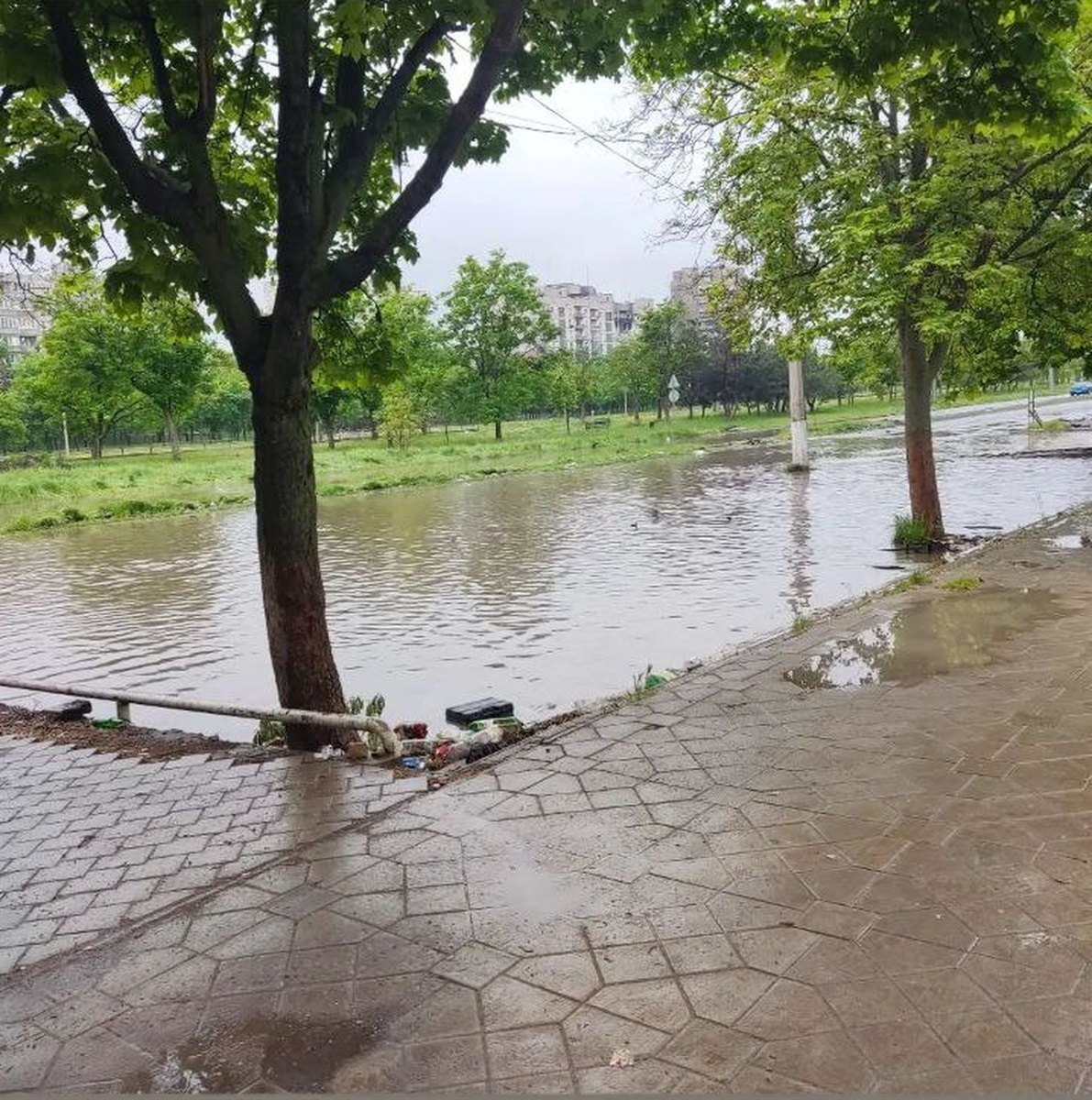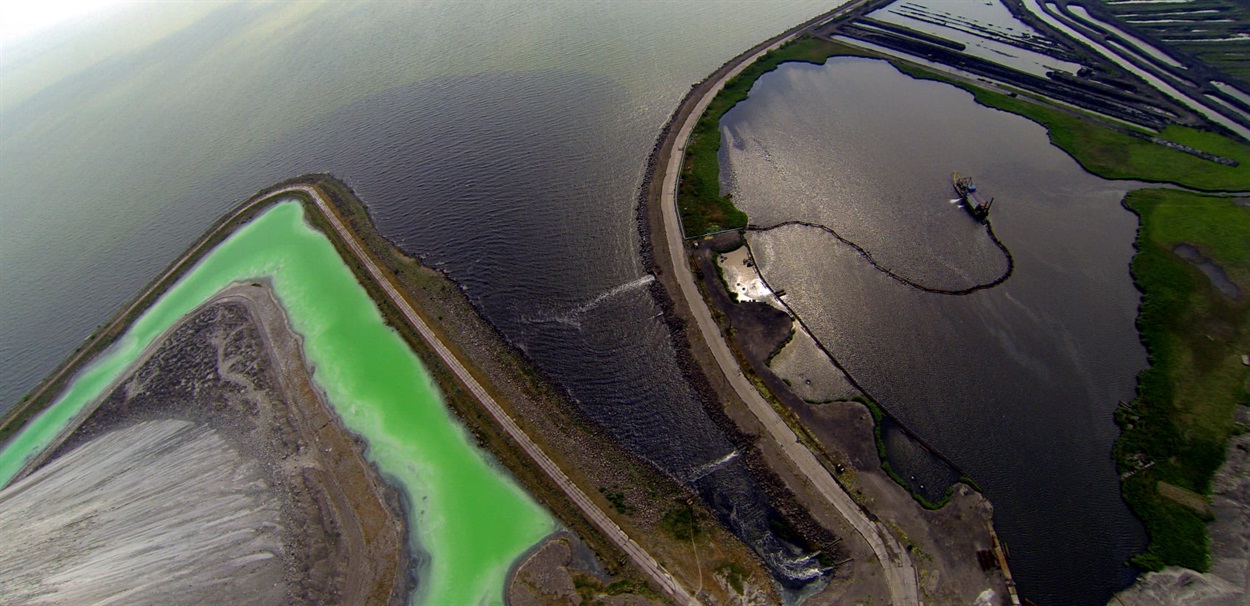Mariupol: an ecological catastrophe that everyone turned a blind eye to

Corpses
Contrary to common belief, there is no evidence that corpses pose a risk of epidemic disease after a natural disaster. However, in case of mass casualties and when bodies are not properly buried (at least 30 m from groundwater sources used for drinking water, at least 1.5 m above the water table, with a 0.7 m unsaturated zone, not in the inhabited areas), there is a great risk of water contamination as well as transmission of many bacteria and infections the dead people had.
In Mariupol, many people who died during the shelling were buried right in the yards near their houses, which means they were buried right next to the water supply system and sewerage communications. Importantly, most of the graves are not deep, and bodies are almost on the surface.
 Credits: Maxim Borodin/Facebook
Credits: Maxim Borodin/Facebook
At the moment, the occupiers are trying to restore the water supply in the city. However, due to the massive pipe damages, water is mostly flooding the streets, while washing away all the bacteria and feces leaked from dead bodies, as well as other things buried nearby. Accordingly, the water gets contaminated water, and poses a direct danger both for those who plan to use the tap water (to whom it will at some point finally reach), and for those who just plan to swim in the sea.
In addition, soon it will be hot in Mariupol, which will accelerate the process of decomposition of corpses - not only those, buried near the surface and water supply, but also those, left under the rubble of destroyed buildings. And considering the last year’s precipitation level, there is a high risk of floods, which will deepen the problem of water supply contamination and water pollution in the Sea of Azov.
Sewerage
Most of the sewage pumping stations were purposefully destroyed by the Russians during the first days. In addition, the lack of electricity did not allow those miraculously undamaged pumps to work. The stations are usually located at the lowest points. Currently, as a result of the gravity flows, the sewage already flooded most of the lowest points of the city. Complete flooding of the sewage pumping station will make the equipment impossible to restore.
Now, along with the occupiers' attempts to restore the water supply despite the damaged pipe system, the water will mix with the sewage, and then contaminated water will end up in people’s homes.
Wastewater treatment
The situation here is also terrible. Firstly, most of the wastewaters will not reach the water treatment plants at all, because the sewage pumping stations that pumped the wastewater up to the treatment plant do not work.
Secondly, even if by gravity flows the wastewater will reach the water treatment plants, it is not likely to be treated. Active peat is used for water treatment. And a certain working condition of the peat must always be maintained.
Finally, it is not yet clear whether the local water treatment plants withstood the Russian shelling.
Garbage and waste
During the siege, the city administration can not completely arrange a collection of garbage, so it was simply thrown away near the houses. Some of the garbage was already washed away with water due to rains or occupants’ unsuccessful attempts to restore the water supply.
The current situation facilitates the growth of pathogenic bacteria in this garbage, which then also gets into groundwater, rivers, and the sea.
In addition, landfills and food waste always mean rats and cockroaches, who also carry a lot of dangerous diseases, and infections and are dangerous to humans in general.
 Credits: Maxim Borodin/Facebook
Credits: Maxim Borodin/Facebook
Lack of clean drinking water and water for household needs
In Mariupol, there is only a few natural sources of water. And even before the war, they were not suitable for use (without having the water treated or boiled). The water from natural sources was hard (naturally high in calcium) and significantly exceeded bacteria limits.
Currently, these sources are completely unusable, since the groundwater (now contaminated with corpses and garbage) always reaches there.
Without basic hygiene and the problems described above, the number of infectious diseases from the onset of hot weather will increase exponentially.
The lack of hospitals, doctors, and medicines complicated this situation even more.
Fishing
In connection with the humanitarian catastrophe created by the Russian Federation in Mariupol, people try to find food by all means, the most popular way is fishing.
However, considering everything that gets into the rivers and the sea with groundwater and floods, with such fish people will also catch different infections, bacteria, heavy metals, and toxic chemicals.
Pollution (heavy metals and chemicals)
While attacking Mariupol, the Russians often used different kinds of banned weaponry, which include chemical weapons. Both heavy metals and many chemicals that are dangerous to humans and the environment were basically thrown into the city.
All of this was also washed away by rains and flooding, reaching the sea.
 Credits: Maxim Borodin/Facebook. Photo from 2012
Credits: Maxim Borodin/Facebook. Photo from 2012
Hazardous substances
The Russians attacked both metallurgical giants of Mariupol (Azovstal and Ilyich Steel and Iron Works) with superheavy weapons - naval artillery, high-explosive bombs "FAB", demining systems, multiple rocket launcher "Grad", Heavy Flamethrower System TOS-1 Pinocchio/TOS-1A Solntsepyok, and many more.
There is a great danger in damaging a technical facility that holds back tens of thousands of tons of concentrated hydrogen sulfide solution on Azovstal. If this liquid were to leak into the Sea of Azov, it could wipe out the flora and fauna there. After that, dangerous substances could also get into the Black and Mediterranean Seas. There are currently no objective data on the condition of the technical facility and sea pollution. However, there are suspicions that the last bombing damaged the dam after all.
Besides, special phosphorus incendiary shells were also used during the attack of Azovstal. Once in the plant's sludge storage, these chemicals are likely to reach the sea.
In addition, in the territory of both plants, there are a large number of chemicals (necessary for technological processes - acids, ammonia, and others). There is no data on the сonditions of any of these storages and warehouses.
In general, the scale of the environmental disaster in Mariupol is abysmal. We call on the international community to make every effort to help Ukraine with the deoccupation of Mariupol. The situation will only get worse, and thousands of Mariupol residents, who are currently being held hostage by the Russians, may die from the environmental and humanitarian crisis created by Russia.
























